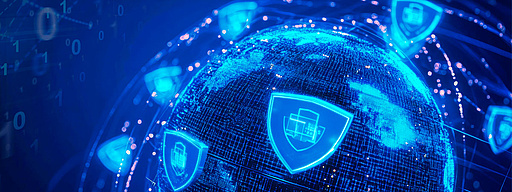
Collective responsibility: on the road to green IT
IT managers play an important leadership role in the green transformation of their companies, from implementing sustainable hardware procurement and lifecycle management practices to educating users. Efficient IT processes help reduce the climate and environmental impacts of business operations.
Short & sweet
- IT managers must place employees at the center of green transformation initiatives to meet new regulatory requirements such as the EU’s CSRD.
- There are three key steps to promote sustainable business IT: optimized lifecycle management, analysis of the sustainability maturity level, and increasing employee awareness of green IT practices.
- The most important takeaway: IT and company managers can do a lot, but they must engage employees by creating a sense of collective responsibility for achieving the benefits of a green transformation.
For companies that are serious about advancing their sustainability goals, it is essential to put their employees at the heart of their green transformation. This is particularly true for IT teams needing to comply with new sustainability regulations taking effect in the next few years, such as the EU’s Corporate Sustainability Directive (CSRD). However, IT managers often underestimate the major role that employee behavior plays in the implementation of holistic IT practices. There are three keys steps to anchor a sustainability mindset deeply in the corporate culture:
- Introduce and prioritize sustainable procurement for efficient lifecycle management
- Analyze the current level of maturity with regard to green IT for all users
- Raise employee awareness of their own contributions to sustainable IT practice
Step 1: Optimize lifecycle management
Optimizing endpoint lifecycle management should be completed before raising employees' awareness of more sustainable IT behaviors. IT managers must first consider the procurement and operational impacts of devices used in the
company. Many hardware providers are already developing more energy-efficient devices, such as servers that produce less heat and require less cooling, to laptops and
smartphones that deliver more performance with lower energy consumption. IT managers should recommend purchasing products from those manufacturers and other vendors who integrate
more sustainable device lifecycle practices such as recycling and re-using materials. Such steps help reduce the carbon footprint of IT operations.
Admins also have the opportunity to extend the useful service life of devices as much as possible by replacing them only when performance or reliability deteriorates. Tools such as
our Argus Experience module can help IT admins by tracking and reporting device performance precisely over
time. Maintaining existing devices longer is more sustainable and cost-efficient. It also supports employee satisfaction by enabling users to continue working with proven and
reliable systems without the typical learning curves and installation disruptions needed for new ones.
Step 2: Evaluate sustainability maturity level
An important basis for anchoring sustainable IT processes is understanding the extent to which employees in the company are already aware of sustainability. For example, IT teams can use surveys to determine if users understand the environmental impact of IT processes and their own day-to-day behaviors. Surveys can ask users if they regularly shut down computers at the end of each workday and work week, if they share files via file servers vs. email attachments, or even how many browser tabs they keep open. Those are small but important ways to determine current awareness levels and encourage more energy-efficient practices.
What’s more, survey results provides a baseline for measuring progress toward greener IT and help identify specific areas to target to increase sustainability. Overall, such measures help promote adoption of greener practices throughout the company while increasing IT’s contributions toward sustainability goals.
Step 3: Steadily increase employee awareness
In order to establish a genuine corporate culture of sustainability, it is crucial to continuously acclimate employees to the subject and its importance. A "gamification" approach can be especially helpful by actively and playfully engaging users with quizzes and tests that help motivate them to improve their knowledge of sustainability practices.
IT admins play an important ongoing role in building awareness in a variety of seemingly small ways. For example, IT staff can regularly ask users to return unused hardware or help them make their digital workspaces more efficient and "greener" with special tools and software.
Regular updates from the IT team about how employees can make their day-to-day IT workflows more sustainable can further increase awareness. Providing suitable self-help measures also build a sense of ownership and collective responsibility to increase sustainability throughout the company.
Conclusion: sustainability requires employee commitment
Ultimately, the decisive factor for the long-term success of sustainable IT initiatives is whether IT managers succeed in getting everyone in the company on board.
Although IT teams create the prerequisites by designing sustainable digital workflows and workplaces, the active participation of all employees is required to complete the green transformation. Companies and IT managers who do so are well positioned to meet the increasingly stringent requirements of CSRD and other new regulations.
Implement energy-saving practices
IT managers face increasing pressure to implement energy-saving practices. Our IT energy management checklist provides an overview of the most important steps.
Read more
Cyber resilience: the most important trends for secure endpoint management
The ingenious principle of Linux software management
- Tags:
- uem,
- bms,
- linux,
- managed software


